Nature, Warfare, and the Illusion of Self

Any normal seed would have succumbed to the salty ocean water or quickly desiccated unprotected in the sun, but these mangrove seeds made a heroic effort to sink roots in the inhospitable sand to gain a living toehold in biologically hostile territory.
I often wonder what it was like for the Allied soldiers to step off the boats into a hail of bullets on the beaches of Normandy. As an empathic person, I get emotionally entwined with other people’s realities. For our soldiers on June 6, 1944, there was nowhere to hide. Allied forces took the beach through sheer numbers, by putting enough bodies on the beach that the Nazis couldn’t shoot them all, that enough soldiers would survive to overtake the German positions, enabling the Allied forces to get a toehold in France, put down roots, and slowly reclaim the European continent. I cannot imagine the horror of advancing across the beach that day. And I can’t help but notice the curious parallels among nature, where D-Day happens every day, and wonder what we might learn from it all.
Landing on another beach on the other side of the world in New Zealand, I was fascinated to discover a legion of army-green seeds amassed on the sand, deposited there by the tides. Any normal seed would have succumbed to the salty ocean water or quickly desiccated unprotected in the sun, but these seeds made a heroic effort to sink roots in the inhospitable sand to gain a living toehold in biologically hostile territory.

It was strange seeing the seedling lying there on the beach, exposed to the intense sun waiting and seemingly hoping for a lucky wave to plant it upright in the sand.
The seeds shed their outer seed coats, and the folded seed leaves had begun to spread. A few had grown short roots, although the roots were fully exposed to the mid-summer sun. One was several inches tall. The prop-roots on the sides tipped me to the identity—mangrove seedlings. It was strange seeing the seedling lying there on the beach, exposed to the intense sun waiting and seemingly hoping for a lucky wave to plant it upright in the sand.
I soon discovered that the mangroves lived in a nearby estuary, well adapted to the brackish water where slow moving river water mixed with salty tidal water from the ocean. They rooted easily there, growing in dense profusion within the sheltered backwater. But the seeds on the beach were doomed. The lack of previously established mangroves on the beachfront implied that the odds were against them, that nature could send battalions in wave after wave to take the beach and each seed soldier would try its utmost to sink down roots and unfurl its leaves, only to be bounced around in the tide, doomed to slowly desiccate in the sand, salt, and sun. Yet, nature doesn’t stop sending in more troops and trying again, because that’s what nature does every day, everywhere.

Apricots produce tens of thousands of seeds for every one that successfully establishes itself and grows to maturity.
Closer to home, I see the same story played out again and again. Thousands of inch-high plant seedlings carpeting otherwise barren ground in early spring when the soil is moist, only to whither and die as soon as the sun dries the soil. Perhaps one in a thousand, or one in ten thousand, survive to carry out their mission. I’ve seen it with feral apricot trees, too. They produce tens of thousands of seeds for every one that successfully establishes itself and grows to maturity. It isn’t just about plants either, because every year there is an explosion of new life, new baby birds and cuddly little mammals, and by the following year there are, on average, no more of any given species than there was the year before.

How many spotted fawns are torn limb from limb by coyotes, dogs, and mountain lions, or run down by a car the first time they cross the road?
Being empathetic, or rather sympathetic, I cannot help but think that it all seems unfair. Seedling plants, baby birds, newborn fawns, nineteen-year-old soldiers; their lives cut short before they’ve begun. How many mothers lost their precious teenage sons as “cannon fodder” to use up the Nazi bullets? How many soldiers trained for battle, yet took a bullet in the choppy surf, dead before they reached the beach or even fired a shot? How many baby birds are devoured alive by snakes or rats or raptors while their parents helplessly watch and scream in protest and pain? How many spotted fawns are torn limb from limb by coyotes, dogs, and mountain lions, or run down by a car the first time they cross the road? How many newborn seedlings have given their utmost to put down roots and send up leaves, only to be desiccated in the sun or starved out by more established vegetation?

We often talk of natural selection eliminating weak genes and favoring the strong, and that is true to a point, but luck is often a bigger factor in determining who survives to pass on their genes.
We often talk of natural selection eliminating weak genes and favoring the strong, and that is true to a point, but luck is often a bigger factor in determining who survives to pass on their genes. On the beaches of Normandy, there was no significant advantage for seasoned war veterans over new soldiers seeing their first tour of duty. All were equally exposed to the unrelenting hail of bullets screaming across the beach. And so it is with plants and animals. The seeds that survive to grow into plants or trees are not always those with the strongest genes, but rather those that are lucky enough to find bare ground to take root, yet not so much sun that they dry out too quickly. The shadow of a small rock may provide the magic microhabitat that allows a seedling to take root. If it isn’t grazed off or stepped on then the plant might survive to maturity.
Reaching maturity doesn’t necessarily provide any guarantee of survival either. Many birds have over-wintered in the tropics and flown thousands of miles back to mate, nest, and raise a family, only to be eaten by a house cat upon arrival. I cannot help but sympathize and anthropomorphize with ground squirrels that wake up from hibernation and excitedly run about in a celebration of spring, only to be flattened by a passing car.

What we perceive as peace and tranquility in nature could arguably be described as a war zone of peril and risk for pretty much every plant and animal trying to make its way in the world.
What we perceive as peace and tranquility in nature could arguably be described as a war zone of peril and risk for pretty much every plant and animal trying to make its way in the world. The ground squirrels that are instantly flattened are perhaps the lucky ones, at least compared to the deer that are mortally wounded by cars, hunters, or mountain lions, only to die a slow, painful death alone in the brush.
Spend much time in the woods, and you will notice that there are bones everywhere. Everything dies, and frequently in the most painful ways imaginable, such as for a mouse that is repeatedly tossed into the air by the claws of a cat or carried off in the talons of a raptor, often eaten while half alive. For the soldiers, too, I suppose the lucky ones received instant death from a killing shot, while most were just brutally torn apart, gut shot, or totally incapacitated by an exploded femur bone, bleeding to death in agony.
We live in a society that is highly insulated from death and the realities of life. People feel no twinge of pain when they buy a beefsteak neatly shrink-wrapped on a Styrofoam tray, or a head of cabbage decapitated from its roots yet very much alive, even while being finely chopped and mixed in coleslaw. We euthanize our pets or “put them to sleep” as we say it, to mask the reality that we are killing them, indeed murdering them. We hire morticians to embalm our deceased loved ones in lifelike form and display them in pretty boxes. We are so detached from death that we don’t understand what it means to be alive.

As a wilderness survival skills instructor, I find it necessary to sometimes throw sticks and rocks at adorable cottontail bunnies in the quest for food. I wish that I could say I kill them with the first shot, but the impact often only stuns them, and it is necessary to sprint, grab the animal, and bash its head in with a rock.
As a wilderness survival skills instructor, I find it necessary to sometimes throw sticks and rocks at adorable cottontail bunnies in the quest for food. I wish that I could say I kill them with the first shot, but the impact often only stuns them, and it is necessary to sprint, grab the animal, and bash its head in with a rock. It feels like murder every time, as it should, because that is the reality of living. As Buddhism teaches, “life is suffering.” The nature of existence is inherently painful, yet we can have compassion for all living things.
Whenever I kill an animal, I find myself wondering who might be left waiting back at home. Did it have a mate? Did it have a mother or father that was still watching over it? Did it have young ones hidden away in a nest or burrow, forlornly waiting for a next meal that will never come? What was it like for women back home, waiting for letters from the war front, never knowing which letter might be the last?

In nature’s battlefield, the dead and dying are nameless. It is easier to accept the circle of life that way, that death is part of the natural order of things.
In nature’s battlefield, the dead and dying are nameless. It is easier to accept the circle of life that way, that death is part of the natural order of things. Every plant and animal is a unique individual with its own genome, and with animals at least, a unique “personality.” Yet they are nameless and therefore selfless, celebrated as part of the interconnected web of life, rather than as individuals with personal biographies and self-importance.
The soldiers of Normandy were also selfless and that is difficult to appreciate in a world of selfie sticks and Facebook profiles. I see the names of fallen World War II solders engraved in plaques in city parks across our country. Each one was somebody’s son, somebody’s brother, or maybe a father, their lives cut short by warfare. Collectively, they were bodies who selflessly threw themselves at the battlefield, much as the mangrove seeds tried to storm the beach with sheer numbers.

Whatever befalls the living world, whether it is a volcano, a landslide, mining work, or a literal nuclear bomb, nature storms over the barren land with sheer numbers, throwing bodies at the problem to restore life and beauty.
Whatever befalls the living world, whether it is a volcano, a landslide, mining work, or a literal nuclear bomb, nature storms over the barren land with sheer numbers, throwing bodies at the problem to restore life and beauty. The same could be said about the Allied invasion of France.
Our world would be a much darker place today if the Allied forces had decided to accept a Nazi Europe, knowing that the price for taking back the continent would be so high. But a great many young men understood that being a body for the cause was more important than being an individual.
I think about the selflessness of that generation and wonder what we could learn from that today. We live at a time when life is more imperiled than ever before, and the cause is arguably the rise of the self and self-importance. We are a consumer culture, consumed with ourselves. It is the ego of the self that drives people to bulldoze a mountaintop or riverfront property to build a house with a view. It is the self that wants a trendy new car, a big flatscreen television, and organic coffee imported from the other side of the planet. It is the self that cares only for itself, celebrity news, and who wins or loses the Super Bowl.

We are witnesses to a destabilizing climate, bigger “natural” disasters, and the initial stages of the biggest extinction event since a rogue asteroid wiped out the dinosaurs sixty million years ago.
We are witnesses to a destabilizing climate, bigger “natural” disasters, and the initial stages of the biggest extinction event since a rogue asteroid wiped out the dinosaurs sixty million years ago. Yet we are consumed with trivial things like getting a job and buying useless stuff, as if saving the planet were somebody else’s responsibility. But the reality is that there is nobody else, and the only thing that will save us from ourselves is to lose ourselves, to recognize that our lives do not belong to us and never did. Our lives belong to the earth and we are here to serve future generations to the best of our ability.
Halting the destruction of our world and creating a sustainable future will require a selfless commitment equal or bigger than the commitment that took back Europe. For it wasn’t just soldiers on the front lines that made a difference, but all those back home who worked to grow food, build equipment, and recycle metals needed for the war effort. At this late juncture, healing our world will require similar selfless commitment, coordination, and camaraderie of everyone working together towards a single unifying goal: Life. If we pull together towards the common cause, we can make the world a better place for all.
Thomas J. Elpel is the founder of Green University® LLC and the author of seven books, including Roadmap to Reality: Consciousness, Worldviews, and the Blossoming of Human Spirit.
Interesting stuff?
Challenge your preconceptions about reality:
Roadmap to Reality


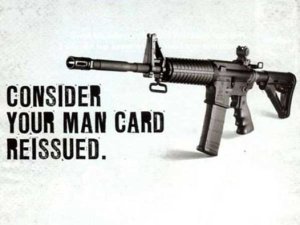
![Boys-becoming-men grow up on the couch, spending thousands of hours immersed in simulated warfare and murder, learning how to blow people away without remorse or emotion. [Photo credit, Get Gaming Now]](https://thomasjelpel.files.wordpress.com/2013/05/call_of_duty_wallpaper.jpg?w=300&h=167)

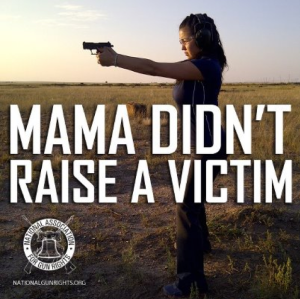


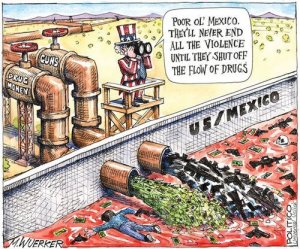

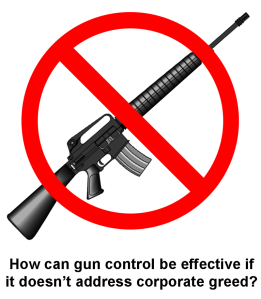
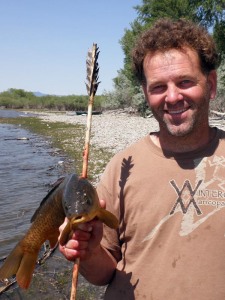

 Thomas J. Elpel Personal Website
Thomas J. Elpel Personal Website